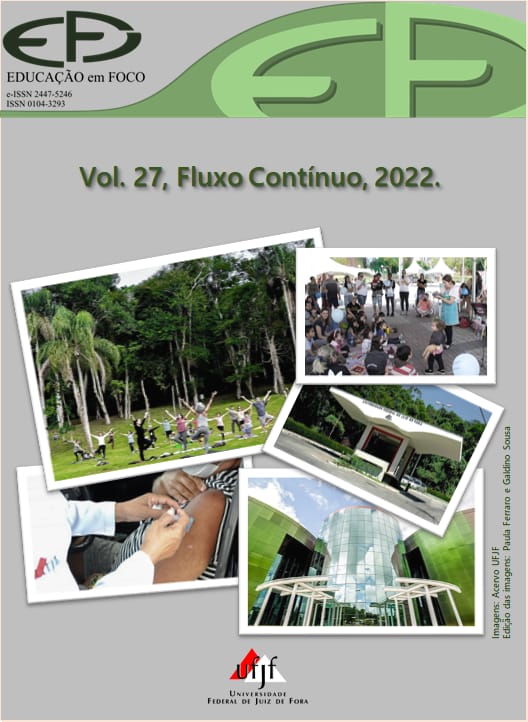LINGUISTIC KNOWLEDGE STRUCTURING CONCEPTS IN TWO VERSIONS OF THE BNCC: SIMILARITIES AND DIFFERENCES
APROXIMAÇÕES E DISTANCIAMENTOS
DOI:
https://doi.org/10.34019/2447-5246.2022.v27.36636Abstract
Considering that the published version of the Common National Curriculum Base - BNCC (BRASIL, 2018) is the result of a combination of the various versions it has gone through, this paper focuses on investigating the structuring concepts aimed at linguistic knowledge in this document’s second and final versions, taking into account similarities and differences in the Portuguese language component for High School (HS). In order to do so, we resorted to studies on didactic transposition and its effects on curriculum documents (CHEVALLARD, 2013; PETITJEAN, 2008)), curriculum studies as a field itself and as an object (SILVA, 2005; MACEDO, 2018), among other theoretical foundations. Methodologically, this is qualitative-interpretative documentary research (MOREIRA; CALEFFE, 2008), and it is situated in the applied field of language studies (MOITA LOPES, 2006) in order to explore and understand the investigated phenomenon. As a result, we highlight a gap between the published BNCC and its second version, since while the latter places literacy more in the scope of graphocentrism, the former expands such concept, bringing a very strong multisemiotic perspective from the multi or new literacies that are in tune with the digital age. One similarity, however, is the fact that both rely on implicit rather than explicit definitions: something that prompts readers to read carefully and assumes a certain familiarity with recent education and linguistic studies, and requires a (re)construction/analysis of the threads that surround them.
Downloads
Downloads
Published
How to Cite
Issue
Section
License
Ao submeter um artigo à revista Educação em Foco e tê-lo aprovado, os autores concordam em ceder, sem remuneração, os seguintes direitos à Educação em Foco: os direitos de primeira publicação e a permissão para que Educação em Foco redistribua esse artigo e seus metadados aos serviços de indexação e referência que seus editores julguem apropriados.

















